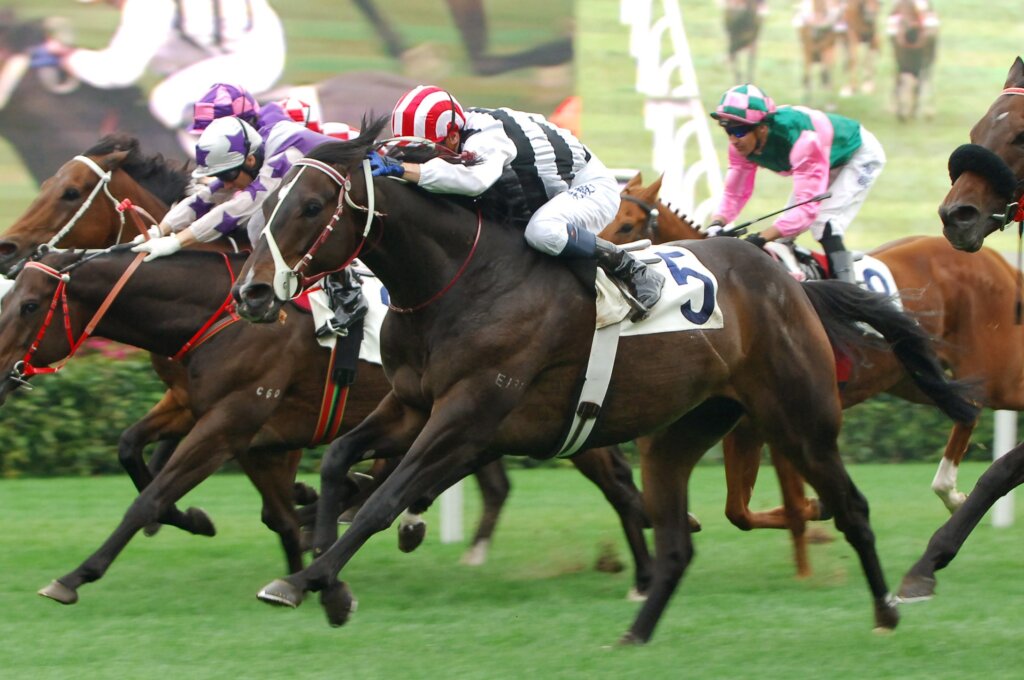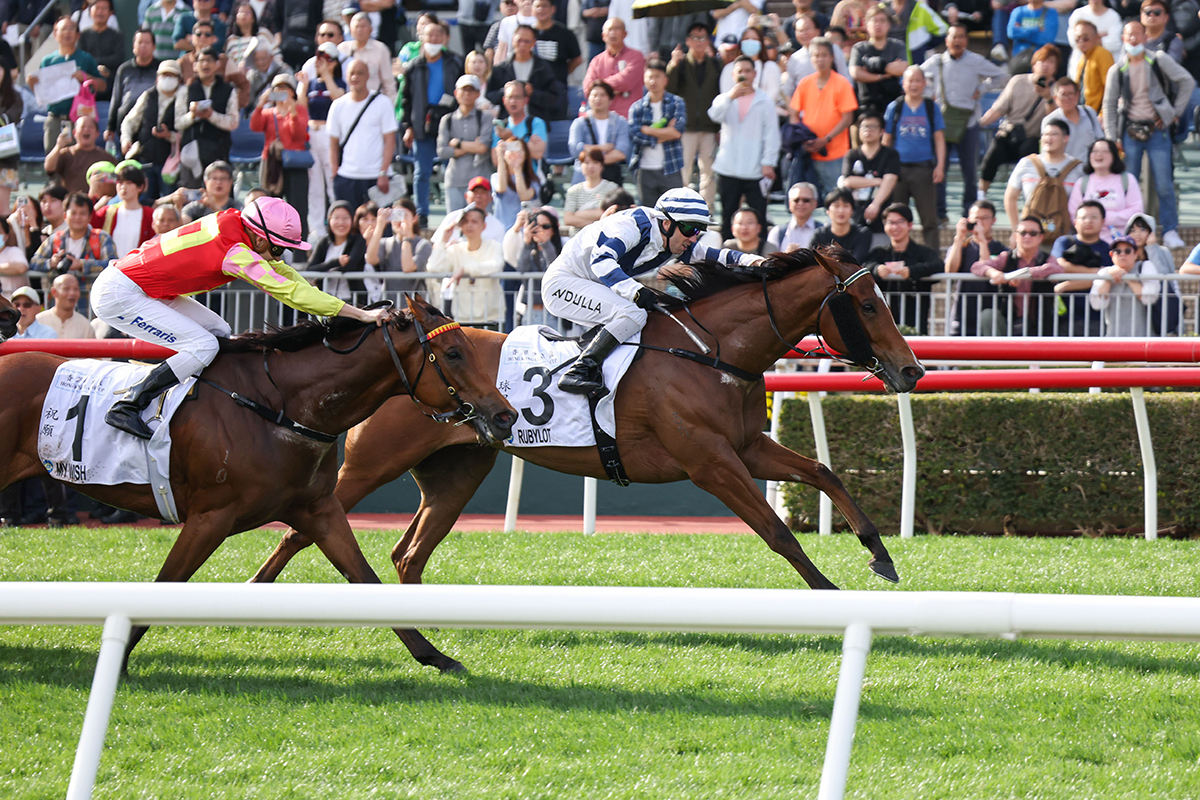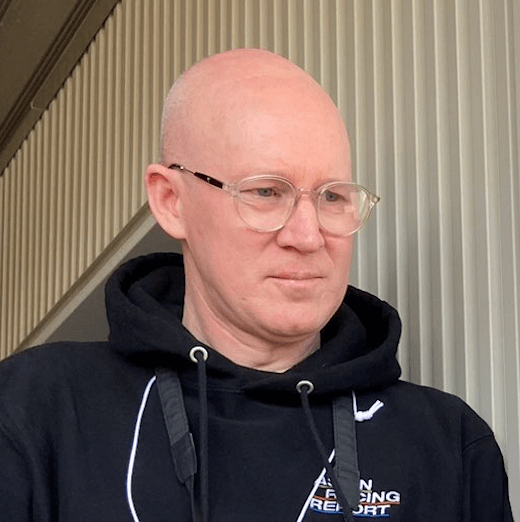“You Have To Go Out Of Your Way To Get Quality”: Where Are The High-Profile Hong Kong Imports?
Sunday’s Hong Kong Derby has a very different look to the days when former trainer John Moore was leading the Hong Kong quest for imports of proven quality from around the world.
“You Have To Go Out Of Your Way To Get Quality”: Where Are The High-Profile Hong Kong Imports?
Sunday’s Hong Kong Derby has a very different look to the days when former trainer John Moore was leading the Hong Kong quest for imports of proven quality from around the world.
21 March, 2025THERE ARE THINGS John Moore doesn’t forget. Take Art Trader. He was a pricey import to Hong Kong, bought after his promising win in the 10-furlong three-year-old handicap at Glorious Goodwood; Johnny Murtagh rode him to victory that high summer day and his second win at his fourth start made him an exciting Pattern race prospect.
Ideal for the Hong Kong Derby, too. He certainly made it onto Moore’s shortlist. Those were the times when the renowned trainer would spend a chunk of his off-season travelling the motorways and back lanes of Europe sourcing what he hoped would turn out to be a Derby winner.
“We’d see the sights in Paris, and catch a show in London, and maybe a bit of golf in Ireland, so it wasn’t full-on all the time … but most of it was,” Moore tells Idol Horse.
Six months after that Goodwood win Art Trader was entering stall two at Happy Valley in the black and white, red-capped colours of Moore patron David Boehm; the gelding had fared ok on debut at Sha Tin, a couple of lengths ninth, but time was ticking if Moore was to get the 84-rater into the Derby.
“He had to qualify,” Moore says. “He didn’t make it. (Christophe) Soumillon gave him a poor ride at Happy Valley and he didn’t get there.”
The grainy February 2005 archive footage shows the blurry horses and jockeys breaking from the gates, but the sound of David Raphael’s race call is crisp: “Art Trader blew it, missed it by six.”
The gelding went back to the Valley two and a half weeks later and won his Class 2 under Michael Rodd, but that was one race too late. When Derby day came around in mid-March, Art Trader was there, but he had to settle for the 1800m Class 2 Handicap one race after the main event; he finished down the field.
That stands as evidence, among plenty through the years, that it’s tough for a three-year-old to leave behind the European summer and find his Hong Kong feet in time for the March Derby: the race comes quickly; acclimatisation and luck are the key words.
Moore’s main point, though, is that Art Trader’s risen rating of 91 wasn’t enough to get him into the Hong Kong Derby field, yet here we are 20 years later, a few days out from the 2025 race, and, as the six-time Derby-winning handler observes, “There are horses in there rated 78 and 76.”
Not forgetting that the lowly 64-rated Nordic Sky made the Hong Kong Derby field in 2022.
This in part reflects an evolving approach from Hong Kong Jockey Club handicappers to give high-profile imports a slightly lower starting rating, giving them the best opportunity to find form quickly upon arrival.
Even so, the horses in the 2005 Derby line-up that Art Trader failed to make, topped by the outstanding Vengeance Of Rain, required a rating of at least 96 to get in; if Art Trader was going towards this Sunday’s Derby, in a basic face value sense, his rating of 91 would put him in the field ranked fourth in the ratings.

As Moore, nearing five years ‘retired’ as a Hong Kong trainer, points out, the race’s make-up has changed as owners’ buying power and preferences have shifted.
“You’ve got Class 3 horses in there,” he says. “In my opinion the quality has dropped back, the depth of quality.”
He is not saying the Hong Kong Derby is a poor race: he knows too well its importance to the Hong Kong racing ecosystem and he, like everyone else, has seen the exceptional champions Golden Sixty and Romantic Warrior emerge from the Derby in the last five years. Yet he sees that the race’s composition has changed, shaped by the economic necessities of the time.
Those high-class imports, the PPs (Privately Purchased horses) he was ahead of his rivals in finding, buying, and acclimatising quickly to the Hong Kong system, are not of the quality they used to be. Tightened purse strings and higher prices are reasons for that, but he also believes too many trainers are too reliant on agents doing their leg work.
“We’re seeing trainers who will not go out of their way during the off-season to see these horses personally, to look at them yourself. Instead, they’re relying on agents who are so plentiful now because of the internet,” Moore says.
“You’ll have a Chinese agent in Hong Kong, speaking to an agent in Europe who is speaking to another agent over there and before you know it you’ve got two to three people getting a commission out of a horse. I think that’s just laziness on the trainers’ part.
“They’re travelling overseas to the yearling sales, but so what? Free trip. You have to go out of your way if you want to get the quality. You have to spend a few dollars to get there at first, and then if you do that yourself, you might get lucky and an owner will send you and pay your airfare and you can use that opportunity to buy other horses as well.”
Alastair Donald is one of the agents Moore used successfully to help source horses in Europe, and before that he and agent John Foote travelled and picked up horses together out of Australasia, South America and the United States. Needless to say he is not against agents, he is one now after all, but he says there’s no substitute for a trainer seeing a horse and judging it in the flesh.
“I’d ask Alastair Donald to go out and send me some pictures of the horses he liked, but that doesn’t give you the true image of the horse in respect to its physique, so I always said I needed to be there to go round and see for myself. I had the money, big money, people were expecting results and I could deliver, but it was important for me to be there,” Moore says.
Moore, a Hong Kong resident, mentions the city’s economy, the Hang Seng Index and people making money on the thriving exchange, but adds, “Deep down Hong Kong companies are in debt, and the racehorse owners are watching their purse strings when it comes to how much they’ll spend on a Derby horse.”
The post-Covid downturn to the Hong Kong economy has something to do with the current trend away from the high-priced PPs and more towards PPGs (Privately Purchased Griffins), horses that arrive in Hong Kong unraced, fresh from yearling sales, ready-to-run sales, or bought off the back of a barrier trial in Australia or New Zealand.
For most of this century PPs have dominated the Derby fields over the PPGs and ISGs (unraced horses bought out of the Hong Kong International Sale). From 2000 to 2019 PPs won the Derby 15 times and PPGs five times. Since then, four PPG/ISGs have won the race and only one PP.
Still, the race has continued for the most part to have far more PPs in the field than PPGs. In 2019 all 14 horses were PPs and in 2021 the Caspar Fownes-trained winner Sky Darci was the only PPG in the Derby. But in 2023 the balance shifted to eight PPs and six PPGs. That looked to be an anomaly when in 2024 it reverted to a normal 11 PPs and three PPGs, but this year the race is an even match-up of seven PPs and seven PPGs or ISGs.
Trainer Ricky Yiu won the Derby in 2023 with the PPG Voyage Bubble and believes the PP is still the go-to preference for owners sourcing a Derby horse, but he says owners generally are compelled to go more for PPGs because those horses fit their reduced spend.
“People are feeling the effects of the economy being down, so while they would still love to own a racehorse, they are switching from PPs to PPGs,” Yiu says. “It’s definitely harder to buy a good PP these days and plus they go for crazy money.”
Moore would have spent about £800,000 or around A$1 million back in the day to secure a top-end Derby prospect out of Europe or Australia, and the list of such horses is long, including his subsequent Group 1 winners Viva Pataca, Collection, Xtension, Military Attack, Designs On Rome, Dan Excel, Helene Paragon, Werther, Rapper Dragon and Beauty Generation.
Nowadays, you might be quoted more than A$2 million and even upwards of A$3 million for the nicest among the emerging Australian three-year-olds with solid Group 1 form. That being so, Moore’s own observation is that any order he does get nowadays for a Hong Kong Derby horse is usually for an unraced horse out of a barrier trial.
“You’d always think that the PPs are going to be more expensive than the PPGs,” says Fownes, but notes that PPG prices are also on the up: “When you’re sourcing these young horses now, if they’re looking really good in their trials in Australia or New Zealand, the people are asking ridiculous money for them because they know what money they can get in Australia in prizemoney if they race them there.”
Australian spending power in Europe is also put forward anecdotally as a reason why it is hard for Hong Kong owners to pull in quality Derby-bound PPs from that side of the world.
“There’s a bit of crossover, but it’s a very specific trade to Hong Kong from Europe,” says agent Stuart Boman of Blandford Bloodstock. “Generally, they want a Derby horse and that’s a very specific type of horse. The Australians, they’re after everything and often a horse that will go a little bit further.
“It’s just a competitive market. There are a lot of new entrants into the horses-in-training market (in Britain and Ireland), a lot of Middle Eastern investors, America is strong, so you’re not alone in that market, it’s not just Australia buying.”
The Hong Kong Jockey Club has tried to help its owners and has upped the number of PPG permits available and reduced the PP permits.
In 2020 the club issued 440 owners permits with a breakdown of 150 permits to buy a PP and 290 to buy a PPG; that reduced to 400 total permits with only 90 PP permits in 2022; in 2024 the Club issued 100 permits for PP purchases out of 440.
PPGs are rated 52 for their debut and work from there. But PPs are given a rating based on past performance. Art Trader started on 84, Moore’s Derby winner Designs On Rome started as a three-year-old in Hong Kong on 92, being a Group 1-placed juvenile, and another Moore Derby winner Werther, started in Hong Kong as a four-year-old rated 89.

The Club has lowered the base rating allowed for a PP entering Hong Kong down to 62 which enables owners to buy a less expensive PP, and a series of bonuses includes a HK$1.5 million payment to a PP, rated 70 or higher at time of import, when it wins a Class 3.
“It’s a balance for those PPs,” says Fownes. “Some of them will come in and struggle. They’re racing against their own age group back in their respective countries and they come to Hong Kong and are thrown into handicaps against the big boys on their way to the Derby. It’s tough, it’s really tough for them.”
He sees the “fifty-fifty mix” of this year’s field as being the right ratio and believes the trend towards PPGs has its benefits in that it gives the trainers time to advance the horse through the ratings from 52 over a longer period of time; and that is similar with PPs like Rapper Dragon and Designs On Rome that Moore imported and raced the season before their Derby campaigns.
John Size, the 12-time champion trainer, has long been the trend-setter when it comes to developing PPGs. It’s worth noting, too, that a big concern like the David Hayes stable operates a model that brings in young unraced stock from his family’s Lindsay Park operation in Australia.
But Moore, for one, would like to see more quality PPs in Hong Kong to bolster the top rank of horses rated in the mid-90s and upwards, especially the 100-plus horses. Yet he understands too well the pressures on purse strings.
He purchased a half-brother to his old Derby winner Werther at last year’s Inglis Easter Yearling Sale for A$300,000 knowing that he’d have to pay an awful lot more for a horse with something like Werther’s racing profile as a PP for Hong Kong.
“If you can’t buy a Werther,” Moore says jovially, “Go out and buy his unraced brother, then cross your fingers.” ∎






